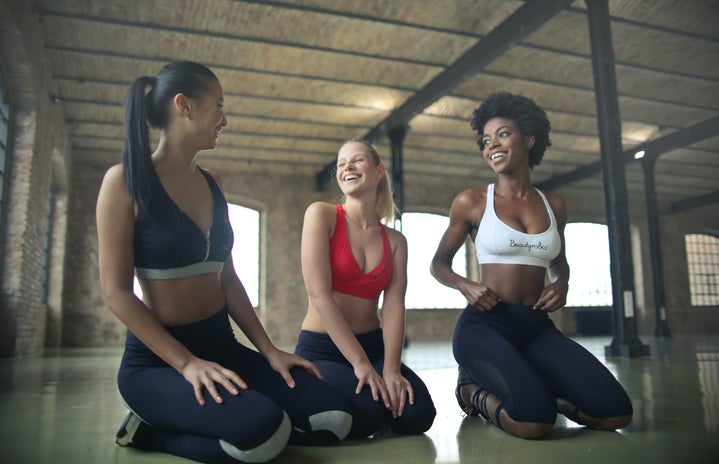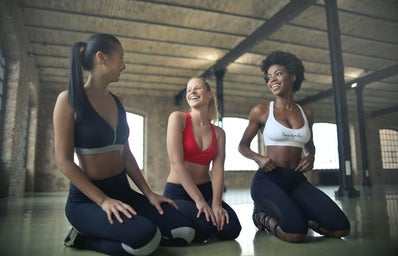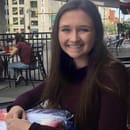Virginia is hot and humid in the summer, almost oppressively so. The August sun glares out of an obtrusive blue sky, onto mountainous farmland and winding, climbing blacktop roads. There are few speed limit signs in the country, operating under the assumption that drivers will slow down at their own discretion. My mom and I take the switchbacks at twenty-five miles an hour and send silent apologies back to the experienced pickup truck behind us, hoping they aren’t too annoyed with our cautious driving. We’re certain our car isn’t made for the mountains. Either that, or we aren’t.
Why are we here? A few days ago, we were itching to go on a road trip. We wanted to explore a part of the U.S. that was new to us, but the summer was ending soon, and we needed to commit to a location. So we googled the best hikes within a few hundred miles radius and chose the one that looked best to us: McAfee Knob trail in Catawba, Virginia.
The trail is actually part of the Appalachian Trail, which appealed to us at the time for its prestige and iconic status in the hiking world. McAfee Knob boasts the most scenic, most photographed portion of the entire 2,200 mile Appalachian Trail, with a rocky pinnacle at an elevation of 3,197 feet that overlooks Catawba Valley with panoramic views. In other words: a hiker’s dream.
So, we booked a suitable Airbnb and packed our bags full of athletic clothes and healthy snacks. Peanut butter and grape jelly on Wasa crispbread, and lots of fruit. Hiking boots, running shorts, and dri-fit tank tops. As many maps of Virginia as we could find. Cameras, phones, chargers, anything we could think of to capture the moment. And then we were on the road.
Virginia is hot and humid in the summer, but the parking lot at the trailhead is full of people undeterred by the weather, ready to take on Catawba Mountain. We lace up our boots and get going, almost immediately encountering a steep uphill that includes precarious steps made of wooden logs to keep erosion at bay. Much like the heat, the incline does not deter us. It does not even give us pause.
I started hiking regularly with my mom during my junior year of high school. I was struggling with body image issues, disordered eating habits, and depression. When I think about it now, the extent to which I despised myself during that time makes me cringe. Not because I’m embarrassed, but because no one deserves that kind of cruelty—especially a sixteen-year-old who’s trying her best. Hiking helped. Not only did the long walks with my mom offer a reciprocal therapy session where both of us could talk about what was on our minds, but the outdoors created a space for me where I felt like I could exist without being observed. I didn’t worry about my appearance, about how my thighs looked in my leggings or how my face looked without makeup. I didn’t worry about food, about planning meals and counting calories. The forest trails were comforting and safe. They offered a place to exist as I was, insecure and downtrodden, without judgment.
We hiked together almost every weekend, exploring the trails no more than half an hour’s drive away from home. There were so many local parks to explore, so many places we never knew about, so many places we had never been to before. Outdoor adventuring turned into our favorite pastime, and with each hike, I rearranged my priorities. When I was surrounded by nature, the world was simpler, and the day-to-day causes of my anxiety melted away. I stopped focusing less on the aesthetic appearance of my body and the stressful demands of school and sports, turning toward ideas of strength and resilience instead. Hiking was a significant part of my recovery, something that helped even though I didn’t know it at the time. The endorphins, the fresh air, the freedom to exist as I was… All of it made life easier. More bearable. Even enjoyable.
McAfee Knob is a challenge for us. The 4.4 miles to get to the overlook are exhausting. As much as we hiked over the summer, we are only amateurs, and we are not used to this kind of elevation change. The last mile is a steady climb with no reprieve at all, but the terrain is getting rockier and opening up from the previous pine forest, and we know we are close.
Sweat soaks my clothes, my backpack, my hair. I only have a liter of water; I should’ve packed more. Each step is a challenge, lifting the leg and trying not to trip on the spindly roots covering the path, smattered with rocks. Each step is a victory, another stride closer to our goal. The path widens; the sun beats down on us. We stop for sips of water beside a large rock. Hikers on their way down offer their greetings and encouragement. We start climbing again.
It isn’t long before the trail flattens. A thicket of brush greets us at the top, with a small wooden sign that says “Overlook.” We follow the arrow, take the last few steps, and emerge from the expansion of trees and bushes.
3,197 feet in elevation is difficult to take in. It’s so high up, it kind of looks like a fake background from an old movie, a scene painted on a sheet. But it’s real, and there, in front of us. The valley spreads out around us, so far below, and the mountains in the distance look like waves. Fluffy clouds are scattered across the pale blue sky, continuing on forever.
I was expecting a heavy, dramatic wind, but only a gentle breeze brushes up against my skin. A cloud covering the sun brings reprieve from the heat. The rocks beneath our feet are warm and solid. The relief of making it to our destination allows for a special type of joy. So my mom and I sit on the edge and drink water and eat Goldfish—and look out at the incredible sight stretching out in front of us.
We are accomplished and exhausted and so, so happy. Despite how tired we feel, we are also strong, somewhere deep inside us that can’t be touched by challenging elevation changes or oppressive Virginia heat.
Places like this offer us a space to exist as we are. Places like this put the world in perspective. And that is healing.



